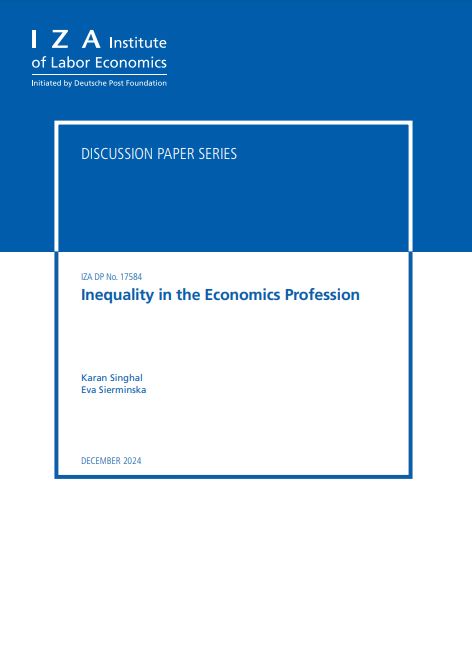
□ 보고서는 경제학 분야에서 여성과 소수 집단이 직면하는 불평등을 다루며, 특히 학계 및 연구 환경에서의 대표성 부족과 구조적 장벽을 분석함. 경제학 직종에서 성별 및 인종별 불균형이 지속되고 있으며, 특히 상위 학문적 직위와 연구 성과에서 여성과 소수 집단의 비율이 현저히 낮음을 강조함. 이러한 불평등은 역사적 편견과 제도적 장애물에서 비롯되었으며, 여전히 경제학 분야 전반에 영향을 미치고 있음
□ 보고서는 경제학계에서 여성과 소수 집단이 겪는 주요 장벽을 연구 논문 출판, 승진, 고용 기회, 연구 자금 지원 등의 측면에서 분석함. 여성 연구자들은 논문 심사 과정에서 더 높은 기준을 요구받으며, 연구 성과가 남성 동료들보다 덜 인정받는 경향이 있음. 또한, 소수 집단 연구자들은 네트워크 부족과 멘토링 기회의 한계로 인해 학문적 성취를 이루기 어려운 구조적 문제를 경험함
□ 특히, #MeToo 운동과 COVID-19 팬데믹이 학계 내 불평등에 미친 영향을 다루며, 여성과 소수 집단이 겪는 차별과 사회적 배제 문제를 강조함. #MeToo 운동 이후 성희롱과 성차별 문제에 대한 논의가 활발해졌으나, 일부 남성 연구자들이 여성 동료와의 협업을 꺼리는 역효과도 발생함. COVID-19 팬데믹 동안 여성 연구자들의 논문 출판율이 감소했으며, 가사 및 돌봄 부담이 증가하면서 연구 성과 격차가 더욱 심화됨
□ 보고서는 이러한 불평등을 해소하기 위해 멘토링 프로그램, 연구 자금 지원, 학문적 네트워크 확대 등의 제도적 개혁이 필요함을 제안함. 또한, 경제학 연구에서 성별과 인종의 다양성을 고려하는 것이 공정성뿐만 아니라 연구의 질적 향상에도 기여할 수 있음을 강조함. 마지막으로, 학계와 정책 결정권자들이 협력하여 경제학 분야의 포용성을 높이는 방안을 지속적으로 모색해야 함
목차
Title page
Contents
Abstract 3
1. Introduction 4
2. Why is it important to study the lack of diversity? 'Fairness' and beyond 5
3. Diversity in the Economics profession: career ladder, fields of specialization and native researchers 7
3.1. Representation in graduate and undergraduate programs 7
3.2. Representation in academia and as faculty (post-Ph.Ds.) 8
3.3. Representation in government and policy jobs (post-PhDs) 8
3.4. Representation in the private sector (post-PhDs) 9
3.5. Representation of sub-fields and topics within Economics 9
3.6. About Us, Without Us 10
4. Biases, barriers and preferences along these stages 11
4.1. Publications and Research 12
4.2. Seminars and Conferences 13
4.3. Peers, Role Models, and Mentorship 13
4.4. Hiring, Tenure and Promotion and Pay 14
4.5. Sexual harassment and #MeToo 15
4.6. COVID-19 and the exacerbation of disadvantages 16
5. What is being done and how to participate? 17
5.1. The role of collectives, associations, programs 17
5.2. Resources for research 21
6. Summary 25
References 26
Table 1. List of Collectives and Networks providing mentorship and financial support to marginalized scholars 18
Table 2. Examples of data sources available to study in inequalities and disparities in economics academia 22
Table 3. Examples of other types of online data used by individual papers in addition to the main/organized sources 24


